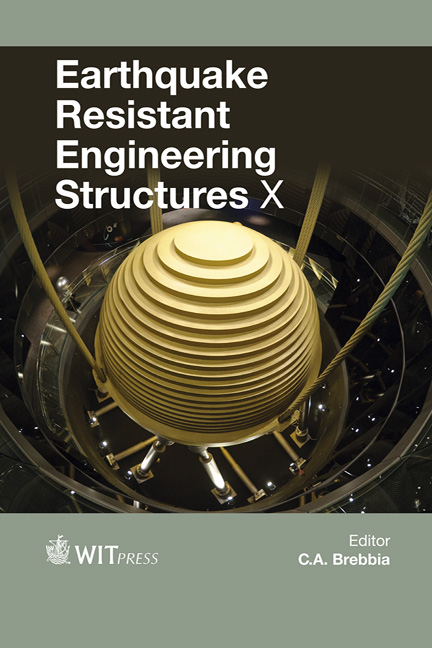Key Issues Regarding Interaction Of Adjacent RC Structures
Price
Free (open access)
Transaction
Volume
152
Pages
17
Page Range
3 - 19
Published
2015
Size
998 kb
Paper DOI
10.2495/ERES150011
Copyright
WIT Press
Author(s)
M. J. Favvata
Abstract
In this study, the key parameters of structural pounding and their influence on the ductility and shear requirements of reinforced concrete structures with different story heights are presented. The examined structures are multistory reinforced concrete (RC) frames with unequal total heights designed according to the codes EC2 and EC8. Results of an extensive investigation in this field indicate that the most vital issues for the seismic response of the RC structures with interaction problems are: the gap distance separation between the adjacent structures, the location of the point of the column that suffers the hit, the difference of the number of stories between the adjacent structures, the local response of the columns that suffer the impact, the local response of the RC beam-column joints at the level of the pounding the existence of masonry infill panels and their response. Each of these parameters is analysed and its importance on the seismic performance of the RC structures is evaluated. Further, initial results based on dynamic step by step analyses have shown that the seismic demand and the level of the seismic hazard are important parameters for the assessment of RC structures with pounding problems. These parameters could be used in the design process in order to eliminate the critically increasing local requirements of the structural members due to the pounding effect. In this view, it seems to be appropriate that the codes provisions for the evaluation of an adequate gap distance between adjacent RC structures take into account the seismic demand and the level of the seismic hazard.
Keywords
structural pounding, shear demands, ductility requirements, gap distance, height variation, infills, beam-column joints, reinforced concrete structure, dynamic step by step analysis, seismic assessment, limit states, seismic hazard





